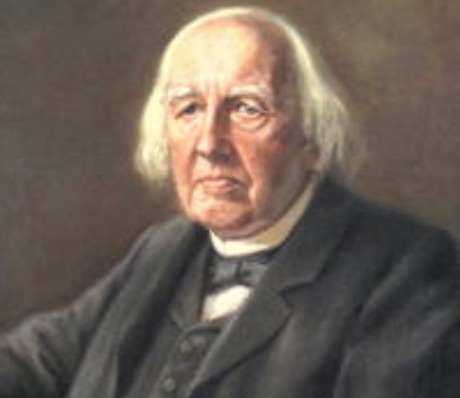
Karl Theodor Wilhelm Weierstrass was born in Ostenfelde, Westphalia, in what is now Germany. When Karl was 8 years old, his father Wilhelm became a tax inspector, requiring that he move the family to various locations in Prussia. Consequently, Karl attended a variety of different schools in his early years. In 1829, when Karl’s father was assigned to the main tax office in Paderborn, Karl entered the Catholic Gymnasium. To help out with the family finances, Karl, at age 14, took a part-time job as bookkeeper, but still managed to excel in his studies. While at the Gymnasium, he was reading Crelle’s Journal that contained papers reporting on the frontiers of mathematical research.
On graduation from the Gymnasium in 1834, Karl wanted to study mathematics, but his father insisted he should study law, finance and economics at the University of Bonn. Rebelling against his father’s demands he did not attend lectures and spent much of his time drinking, fencing, and studying mathematics on his own. In 1838, after 8 semesters at the university, he dropped out without a degree.
Though Karl’s father was distraught by his son’s choice, he acquiesced and Karl was enrolled in 1839 at the Theological and Philosophical Academy of Münster to obtain his teaching certificate. On the staff of The Academy of Münster was mathematician Christoph Gudermann, who had made some significant contributions to the theory of elliptic functions. Inspired by Gudermann’s research and mentoring, Karl wrote two papers in 1841 and 1842 on the expansion of analytic functions as convergent power series.
When Weierstrass graduated in 1842 with his teaching degree, he obtained a job at the Pro-Gymnasium in Deutsch Krone in West Prussia (modern Poland) where he taught high-school level courses in a variety of subjects. Weierstrass described the 6 debilitating years in that teaching position as “unending dreariness and boredom,” because the school had no mathematics library and he had no mathematical colleagues with whom he could discuss ideas. In 1848, Weierstrass took a position as mathematics teacher at Collegium Hoseanum in Braunsberg.
Though teaching absorbed most of his time, Weierstrass was able to scrounge enough time at the Collegium to continue his mathematical research and he published several papers on Abelian functions. However, it wasn’t until 1854 that he caught the attention of the mathematics community with his publication of Zur Theorie der Abelschen Functionen in Crelle’s Journal. In that year, the University of Königsberg conferred an honorary doctor’s degree on him and by October 1856, he accepted a professorship at the University of Berlin.
Through the late 1850’s and early 1860’s, Weierstrass gave courses on applications of Fourier series to mathematic physics, the theory of analytic functions, and an introduction to analysis. In his lectures of 1863, on the theory of analytic functions, he proved that the complex numbers are the only commutative algebraic extension of the real numbers. In 1864, he became a mathematics professor at the Friedrich-Wilhelms-Universität Berlin, which later became the Humboldt Universität zu Berlin. During these years, Weierstrass mentored many students who would become famous mathematicians, including Sofia Kovalevskaya, Georg Cantor, Georg Frobenius, and Hermann Minkowski.
Since the time of Newton, the foundations of calculus had come under attack as somewhat intuitive and lacking in rigor. The concept of a limit was not well-defined, and the concept of continuous functions had not been expressed in a precise way. While Augustin Cauchy had introduced the concept of epsilon-delta proofs, Weierstass extended the concept to include the distinction between continuous and uniformly continuous functions. This led him in 1872, to the construction of a function that, although continuous, had no derivative at any point. Through such investigations, Weierstrass played a pivotal role in establishing a rigorous foundation for calculus and significantly influenced the development of real and complex analysis, thereby laying the groundwork for the theory of functions of a real variable.
Around 1894, Weierstrass was confined to a wheelchair, succumbing to the ill-health that had plagued him since middle age and, on February 19, 1897, he died from pneumonia. Karl Weierstrass had become a highly respected mathematician in his lifetime. The Weierstrass Institute for Applied Analysis and Stochastics in Berlin is named in his honor. His work and contributions have had a lasting impact on the field of mathematics, particularly in analysis and calculus.
Reflecting the creativity that he brought to his mathematical proofs, Weierstrass once observed, “It is true that a mathematician who is not also something of a poet will never be a perfect mathematician.“
